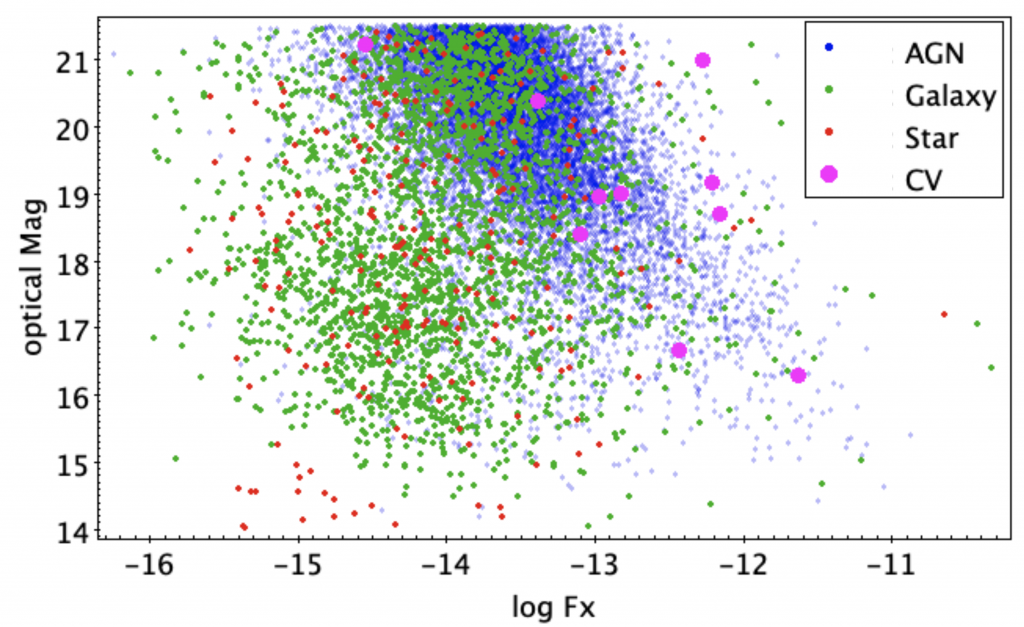‘Chandra Source Catalogue’
Summary
The Chandra Source Catalog (CSC) followup program uses SDSS-V spectroscopy to characterize the optical/NIR counterparts of Chandra X-ray sources. Spectra will provide redshifts and source classifications for AGN, galaxies and stars with active X-ray emission detected in the Chandra Source Catalog that have been matched to counterparts in the PanSTARRS-1, Gaia DR2, and 2MASS catalogs. Chandra X-ray imaging provides excellent sensitivity and unparalleled spatial resolution, unveiling a different population of sources than other X-ray missions.

Observational goals and requirements
The BHM CSC project seeks to gather optical and IR spectroscopy for a large sample of X-ray selected sources discovered (mostly) serendipitously via uniform processing of the Chandra data archive – the Chandra Source Catalogue version 2.0.
For the majority of the CSC sources, the immediate goal is to obtain redshifts and classifications for the optical counterparts to the X-ray sources (selected from the PanSTARRS1 and Gaia DR2 catalogues). For a smaller subset of CSC sources, the X-ray detections are associated with NIR-bright 2MASS objects. For these targets, expected to be Galactic stars, we aim to collect APOGEE H-band spectroscopy for classification purposes.
Target selection and survey implementation
The BHM CSC program is implemented as two ‘cartons’ – one for objects which require optical (BOSS) spectroscopy, and one for objects to be targeted with APOGEE NIR spectroscopy.
CSC targets with existing SDSS archival spectroscopy are de-prioritized w.r.t. unobserved targets
BOSS exposure time requests (cadences) are determined according to apparent magnitude, based on past experience obtaining redshifts for counterparts to X-ray sources.
Further details of the algorithms and criteria used to select CSC target cartons are given in the links below.
Target selection generation v0.5.3
The v0.5.3 generation of targeting was used during initial SDSS-V/FPS operations, below is a list of CSC cartons it includes:
Spectroscopic data released in DR18
No new CSC data is released in SDSS DR18
Back to Black Hole Mapper Science Programs
